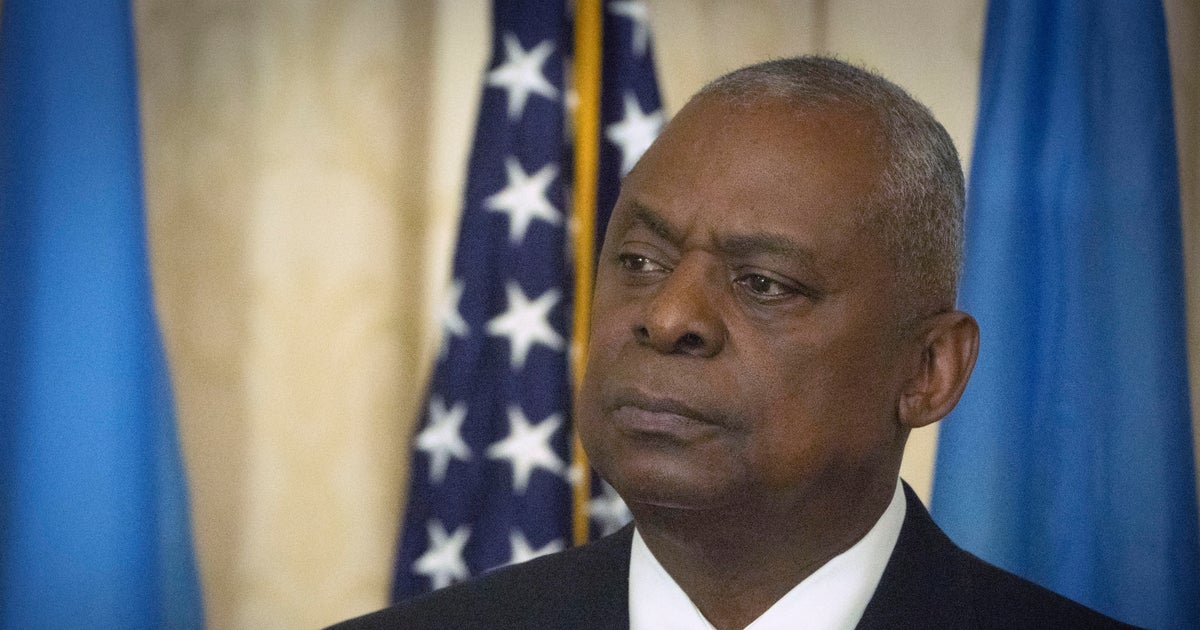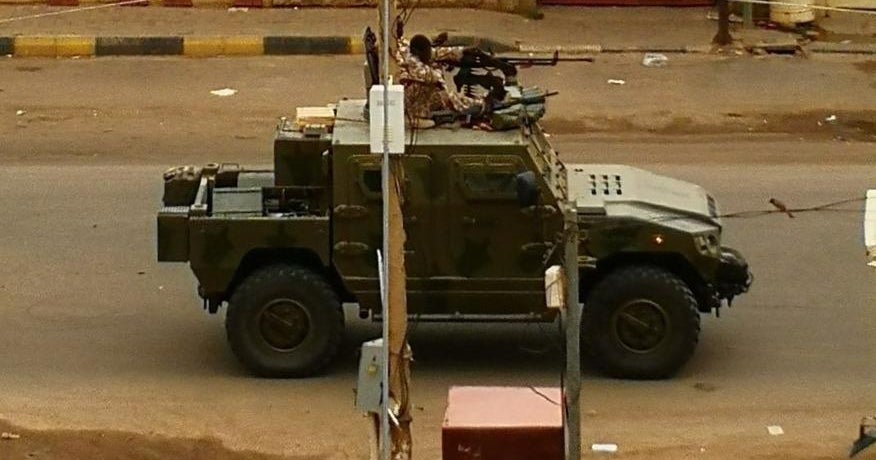CBS News
French election first-round results show gains for far-right, drawing warnings ahead of decisive second-round

Paris — A far-right, anti-immigration party is in reach of becoming the biggest political force in France after the first of two rounds of voting in parliamentary elections drew a historically high turnout. The first-round results in the French election are the latest evidence of surging support for the far-right in Europe, but the real test of that trend nationally will come when France opens the polls for the second, decisive round of voting in one week.
French President Emmanuel Macron took a huge gamble by calling the snap election this year, and he’s now issued a battle cry urging the nation’s voters to come out in force on July 7 to stop the far-right, which made its best showing ever in round one, from rising to the very top of government in round two.
Turnout was unusually high as many voters said they either wanted to block the far-right, or just get rid of Macron’s government.
JEREMY AUDOUARD/AFP/Getty
Far-right leader Marine Le Pen said her National Rally party had “virtually wiped out” Macron’s centrist power base in the first-round Sunday vote. National Rally took a third of the votes in that round.
Macron called these elections hoping to rally voters against the far-right, after parties like Le Pen’s fared well in Europe-wide elections for the European parliament, which governs the European Union, in the spring.
“President Macron made a colossal error in judgment,” political analyst Douglas Webber told CBS News. Webber said the first round results show Macron could be forced to share power with National Rally — a party that is anti-immigration, wants to roll back the power of the European Union, and has even threatened to pull France out of the U.S.-led NATO military alliance.
If the National Rally wins enough votes in the second round, party president Jordan Bardella could find himself in the country’s second-top job, as prime minister. He wants to pull back on France’s support for Ukraine in the face of Russia’s ongoing invasion.
“That would be a very good result for Vladimir Putin, a very bad result for Ukraine and President Zelenskyy,” said Webber.
That outcome is not a foregone conclusion. The French have a history of voting more ideologically in the first round — “with their hearts,” as the saying goes — but then more tactically, “with their heads,” in the second round.
Luc Auffret/Anadolu/Getty
Macron and the thousands of left-wing supporters who gathered in central Paris on Sunday to voice their concern at the far-right’s performance will be hoping that’s the case, and that the actual gains in parliamentary seats won’t mirror the windfall seen for Le Pen and Bardella’s party in round-one.
“Right now, we have big problems with the right wing,” said one young woman before the results came in. “We want more democracy, you know, we don’t want people to feel afraid or scared about living in France.”
But the political winds across much of the continent have been blowing decidedly to the right for more than a year. Should the far-right parties win big in France on July 7, Webber warned it could leave a power “vacuum at the heart of Europe,” which has been dominated for years by the influence of its two biggest economies, France and Germany.
“No one, or no other group of countries, could conceivably fill the role that’s historically been played by France and Germany,” he said. “That’s, of course, the main reason why so many people, observers, are extremely worried.”
Among the worried Europeans voicing their angst on Monday was Polish Prime Minister Donald Tusk, who said the first-round results in France indicated a “very dangerous” political turn.
“This is all really starting to smell very dangerous,” said Tusk, who suggested without offering specific evidence that “Russian influence” was behind the rise of “many parties of the radical right in Europe.”
“Even the complete victory of the radical right of Ms. Le Pen’s camp does not signal the loss of power by the center represented by President Macron,” Tusk told reporters. “But it is a very clear sign of what is happening not only in France, but also in some other countries, also in Western Europe.”
Tusk said France “will be forced to confront these radical forces,” and he warned that, “foreign forces and enemies of Europe are engaged in this process, hiding behind these movements.”
Macron has called on voters from across the political spectrum to block the far-right’s precipitous rise with their votes in the final round on Sunday.
CBS News
U.S. Marines, Japanese and Australian troops will train together amid heightened concerns over China

U.S. Marines will take part in joint training with Japanese and Australian forces in northern Australia, the three countries’ defense ministers announced Sunday as they expressed concern about a spate of confrontations with China’s increasingly assertive military.
Australia’s acting Prime Minister Richard Marles hosted U.S. Defense Secretary Lloyd Austin and Japanese Defense Minister Nakatani Gen for talks in Darwin, Australia.
The trilateral amphibious training between Australia, Japan and the U.S. Marine rotational force in northern Australia will begin in 2025 with Exercise Talisman Sabre. Australia will also join Exercise Orient Shield in Japan for the first time next year.
“Recognizing the critical role the trilateral partnership plays to uphold regional stability, we commit to trilateral policy coordination and to consult each other on regional security issues and contingencies,” they said in a joint statement.
In their statement, the three defense ministers reiterated “serious concern” about destabilizing actions in the East and South China seas including “dangerous conduct” by the Chinese military against Philippine and other vessels from the region. China claims the South China Sea almost in its entirety.
“We reiterate our strong opposition to any unilateral attempts to change the status quo by force or coercion,” they said, adding that it is “important that all states are free to exercise rights and freedoms consistent with international law.”
The ministers also urged the importance of peace and stability across the Taiwan Strait. China claims self-ruled Taiwan as its own territory and has stepped up military harassment with frequent drills around the island.
Marles, who is also Australia’s defense minister, said following talks with his Japanese counterpart in September that both nations looked to ways to build greater familiarity between their forces. One of the “obvious opportunities” was for Japan to participate in activities during the U.S. Marine rotation in Australia, he said Sunday.
“Having a more forward-leaning opportunity for greater training with Japan and the U.S. together is a really fantastic opportunity,” he said.
Asked if the increased military cooperation would anger Beijing, Marles said the decision was about building “the best relationships possible with like-minded countries, with our friends and with our allies.”
CBS News
Photographing the rooms of kids killed in school shootings

An unmade bed
A library book 12 years overdue
The next day’s outfit
Notes to her future self

Click on the door to enter
CBS News
How do you make a portrait of a child who isn’t there? Photographer Lou Bopp found a way, but it wasn’t easy.

In early 2018, I was deplaning after an 18-hour flight when Steve Hartman called. He had an idea: to photograph the still-intact bedrooms of kids who had been killed in school shootings.
It’s a headful. And six years later, I still don’t have an “elevator pitch” for the project — but then, I don’t often talk about this project. It is by far the most difficult I have ever worked on.
When Steve, my friend of about 25 years, asked me if I would like to be involved, I said yes without hesitation — even though I didn’t think we would get any families to agree. There is no way that I would have said no to partnering with him on this.
Emotionally, I was not sure how I would get through it. Within a few months I was on my way to Parkland, Florida. Alone. I’m not sure that I realized that I would be on my own.
But here I was. An on-location commercial photographer who focuses on people and pets to create compelling, honest, textural and connective moments for large brands, per my LinkedIn professional profile, on a project where there is no one to take photos of — for the most brutal of reasons.
How do you make a portrait of a child who is not there?
In each of these children’s rooms — the most sacred of places for these families — there was the sense that the child had just been there, and was coming right back. It was as if they’d just left their room like that when they went to school in the morning and were returning in the afternoon.
I wanted to capture that essence.
Most kids’ bedrooms are their very own special places, and these were no different. I looked everywhere, without touching anything. I photographed inside trash cans, under beds, behind desks. Their personalities shone through in the smallest of details — hair ties on a doorknob, a toothpaste tube left uncapped, a ripped ticket for a school event — allowing me to uncover glimpses as to who they were.
But there was an emotional challenge in addition to that creative one. Over the course of more than six years, we visited with many families around the country. The parents I spoke with seemed grateful that I was there. But each time I received a call or text from Steve about a new family, my heart sank.
It meant another family had lost a child.
I find it unfathomable that children being killed at school is even an issue. It makes no sense. It’s impossible to process. The night prior to each one of the family visits, I didn’t sleep. And I knew I wouldn’t going into the project. It’s not a self-fulfilling prophecy. It is nerves. And empathy. And sorrow. And fear.
In my notes from early on in the project, back in 2018, writing in seat 6H on the flight back from Nairobi, I reflected on the emotional task ahead.
“This is going to be one of the most difficult things ever, emotionally, for me, and not just work related. As I read my research documents, I get visibly emotional,” I wrote, noting my gratitude that the dark cabin prevented the other passengers from seeing me.
The prospect brought my own fears to the fore, both for myself — “I can’t help thinking about Rose,” my daughter, “and what if. I’ve lost sleep over envisioning the what-ifs well before Parkland” — and about and for meeting the families in the project: “When I read about April & Phillip and Lori’s plight, I somehow, for some reason put myself in their emotional position even though that is impossible, I have no idea, it’s beyond comprehension, I do not know what they feel. I do not know what I am going to say to them, I’m scared beyond belief. And alone.”
But just days later, I was photographing the first assignment for the project: Alyssa Alhadeff’s room. She was just 14 years old when she walked out of that room to head to Marjory Stoneman Douglas High School. I was shaky meeting the family friend who greeted me at the house. Her daughter was Alyssa’s best friend, and a photo of the two girls was on the table.
According to my notes, “The room was a beautiful teenager’s messy room. My emotions were kept in check the way that they usually are; By hiding behind the camera. I removed my shoes before entering. My heart was pounding and it reverberated through my body and soul, I felt like I was in one of the most sacred and special places on Earth. I was so careful not to touch anything.”
I left feeling ready to explode in sadness and anger.
Later that day, I photographed Carmen Schentrup’s room. Her younger sister had survived the Parkland shooting, but 16-year-old Carmen was killed in her AP Psychology class. Meeting her parents, April and Phillip, was what I was most scared of.
“I feel so much pain and compassion for them and I don’t want to say the wrong thing, drop cliches etc.,” I wrote at the time. “I spoke to Steve for guidance. He said, just be you. That’s all I can do. Just be me. He was right, those three words helped carry me through this entire project. Just be me.”
April let me in, and I worked quickly, only meeting Phillip as I was leaving. “The conversation felt like we all three were just trying to hold it together. I cannot imagine what they are going through, my heart hurts for them. This was / is such a painful project, and reconciling it will be impossible.
“I think about how anything can happen at any time to any of us. Literally. You never know,” I wrote.
After only about 16 hours on the ground in Florida, I was done with the first portion. I felt the project was a must, but I also dreaded the next call from Steve about the next family. I didn’t know when that call would come — many years later, or the very next day, possibly never.
But last month, we — and the documentary crew that filmed us working — completed this project. While I haven’t seen it yet, I know Steve’s piece won’t be a typical Steve Hartman segment. How could it be? I know he struggled too, and we both have spent a lot of time processing this.
I remember one August evening, I was devastated as I left the home of one of the families. Within minutes, I passed an ice cream shop crowded with other families — seemingly carefree, full of joy and laughter. The juxtaposition, mere minutes apart, cracked my soul.
I hope some way, somehow, this project can facilitate change — the only possible positive outcome for this I could comprehend. After the news cycle ends, these families will still be living with an incomprehensible nightmare.









